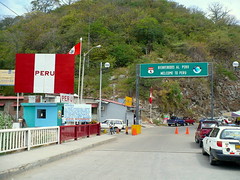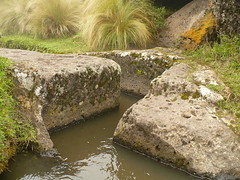The Shipibos of the River Rimac

Shipibos on the Rimac
They used to live and the edge of an Amazonian river that was an unending source of life. But they came to Lima, and now they live on river that is a polluted source of illness and death. Far from their lands, their children no longer speak Shipibo and their customs are almost forgotten.
She is barefoot, but walks with such ease over the jagged rocks and stones of the river Rimac its as though she is walking on cotton. Asencia Sánchez Canayo is an elder Shipibo who never had the need to wear any kind of shoe. Walking bare foot through her sacred forest almost all her life left her with soles so thick that she can cope with anything this city has to offer.
But for Asencia, just as with the other 384 native Shipibos living on the shores of the Rímac, far from the forest, its heat, the river and their habitat it’s not enough to be physically strong.
Living on the banks of a sick river
In 2000, 14 Shipibo families arrived in Lima when invited to a crafts fair and never left, setting up home in Rimac. Or to be more exact, 4,500 squared metres of the Rimac riverbank at the Cantagallo market. From the communities of Ahuaypa, Pauya, Belén and others, more were brought by then Presidential candidate Alejandro Toledo to take part in marches, particularly the famous Marcha de los Cuatro Suyos.
Others arrived here to study or find work after being pushed off their native lands by illegal loggers and mines. They left behind the river Ucayali, their source of life, and arrived at the river Rimac, a sick and dying river. In this there are no fish, only rats. There is no water, only sewage. The Amazon rainforest was their pharmacy, their grocery market, their hardware store, their church – Everything. Now they inhabit ground that, according to their testimonies, only breeds stomach illnesses that cause suffering to their children.
They no longer dedicate themselves to agriculture, hunting, fishing or other traditional activities: now they are sellers of art, some work as maids, and some are studying hard in local schools in the hope of returning home with skills to help their people.
Identity
The relationship that exists between the indigenous and their lands is one of interdependence. If taken away, the native communities risk loosing their identity. Far from their territories and customs, the Shipibo parents are more interested in westernising their children. Few bother to teach the next generation the language of their ancestors.
Ruth Soto Sánchez, a school teacher in the school built for these Shipibo, shows us the room where the children are taught. There is no Shipibo alphabet, no books and no reference at all to the Shipibo culture.
Source of life?
Bare foot, Asencia is now squatting to was clothes in one of the communal pipes. She speaks very little Spanish but attempts to put together a few sentences that explain she is an indigenous doctor… a “white witch”. She more than anyone knows the jungle’s secrets, she has devoted her life to studying the properties of the many species of plants and seeds that, for now at least, still exist there.
“Why Lima, why not stay in the mountains instead?”, we ask her. After a long silence, she this time speaks clearly, “I’ve never been”, explaining that her spirit will always remain in the Amazon, the true source of life.
Translated from an article by Derry Diaz of La Republica, and adapted.
More photos here.
Tags: amazon, indigenous, lima, poverty, rainforest, rimac, rimac valley, shipibo, toledo, ucayali












